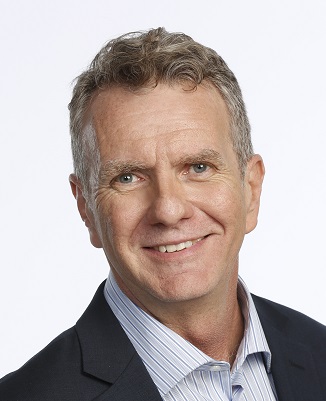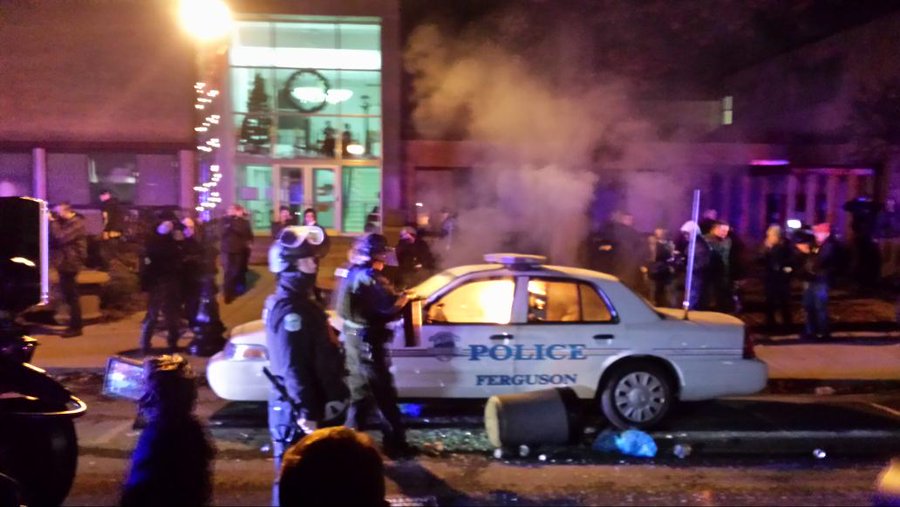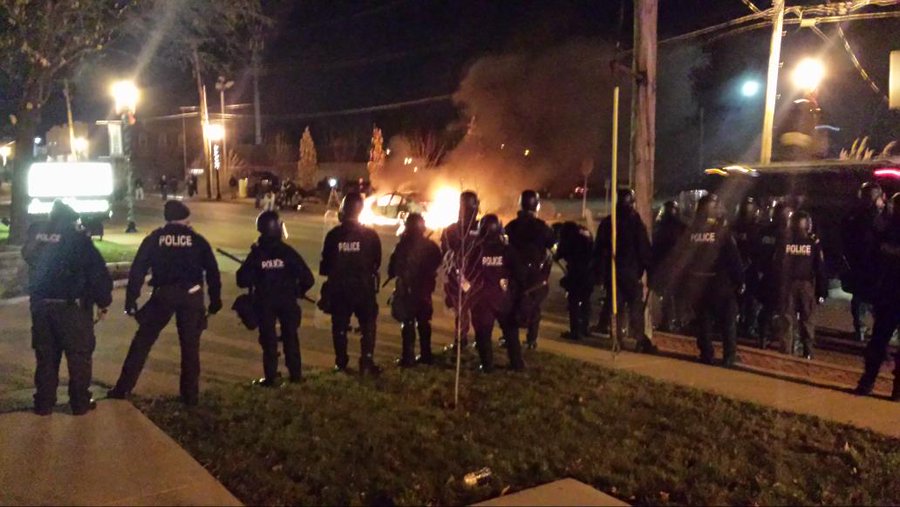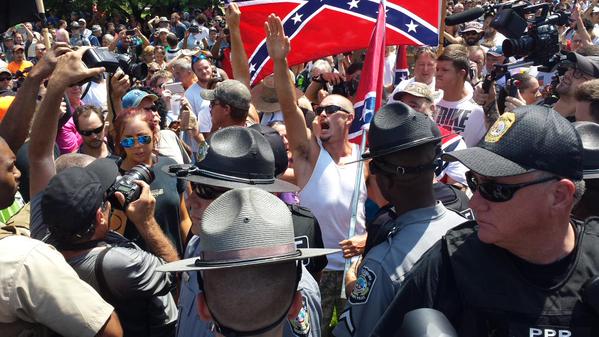By Jim Ryan
ABC News Radio Correspondent
It’s right there in the First Amendment to the U.S. Constitution, alongside guarantees of freedom of religion and freedom of the press: a specific promise from the Founding Fathers that nothing will stand in the way of “the right of the people peaceably to assemble.” Indeed, the practice of protest and demonstration was sewn into the American fabric even before the ratification of the First Amendment in 1791. (While subtle differences may exist between the two, I use “protest” and “demonstration” interchangeably here.)

When citizens proclaiming that Black lives matter take to the streets of Los Angeles or anti-abortion activists gather in front of the U.S. Supreme Court, they carry on the tradition of the Sons of Liberty who demonstrated against British taxing policies by dumping a ship-load of tea into Boston Harbor on Dec. 16, 1773. Liberal, conservative, rich, poor, anti-government, pro-government – Americans intent on publicly expressing their opinions hold up the First Amendment as a shield against interference. By anyone.
And when those activists unfurl their banners or hoist their placards, the same constitutional amendment assuring their right to peaceably assemble protects your right to observe and report on their activities and on the responses their activities generate. The Minnesota state troopers who arrested a CNN crew covering demonstrations in Minneapolis in May 2020 were harshly criticized by the crew, the network and ultimately Gov. Tim Walz for their heavy-handedness.
Covering a protest is not the toughest journalistic assignment; after all, demonstrators want you to report on the event and to carry their message – whatever that might be – to a wider audience. But there are a few guidelines to keep in mind as you wade into a crowd of protesters and, in many cases, their opponents.
Leave Your Personal Opinion in the Car
The longer you spend working as a journalist, the more likely you are to form personal opinions and, yes, biases. You, as a reporter, cannot spend hours standing at crime scenes or sitting in courtrooms, city council meetings or congressional hearings without drawing conclusions based upon the things you’ve seen, the people you’ve met and the stories you’ve told. But a basic tenet of journalistic integrity demands that you leave your personal “stuff” at home. Always.
In no situation is the principle of fairness more important than in your coverage of demonstrations. You may agree wholeheartedly with the activists you’re interviewing or you may vehemently detest their ideas and message. Your job is not to share your views on the topic, but to ask why they feel the way they do and what their goals are in speaking in a public forum. Equally important is to gather the reactions of those who may oppose the point of the demonstration. And for you, the same tenet of balance and impartiality must apply.
A basic tenet of journalistic integrity demands that you leave your personal ‘stuff’ at home. Always.
It sounds a bit masochistic, but to me the greatest compliment comes in the phone calls, emails and tweets that follow the airing of a story I’ve done about a protest. “Well, you’re just one of those liberal media types,” a listener will insist. “You’re just toeing the neo-conservative line,” another will argue. Few things are as satisfying as hearing angry voicemails that criticize my story from all directions. It means that I filtered out my personal views entirely, leaving the statements of the protesters and counter-protesters to stand on their own.
Watch Your Back
Frequently, an event that begins as a simple sharing of ideas will transform into a noisy standoff between the “pro” and “anti” advocates drawn to most demonstrations. Even if the confrontation becomes a shouting match, as long as it remains ideological and non-physical, the same rules of fair, thoughtful reporting apply. Gather the words and opinions of both sides and report on the event without favor. (In my experience, the most impactful protests to cover are those in which people end up “in each other’s faces” — assuming the disagreement remains exclusively verbal.)
Occasionally, a demonstration descends past the shouting-match phase and into the arena of physical violence. This is when journalists must decide whether the risk of injury outweighs their natural impulse to witness and to report. At the very least, it’s wise to move back from the action, to observe it from a safe distance and not to interfere with law enforcers trying to restore peace between the protesters and counter-protesters.
But what if law enforcement is an active participant in the confrontation? I can’t help but speak from personal experience on this one.
Lessons from the Ferguson Riots

After the fatal shooting of Black teenager Michael Brown by white police officer Darren Wilson on Aug. 9, 2014, African-Americans in Ferguson, Missouri, took to the streets near the scene of the shooting to protest what they believed was an unjustified and racially motivated killing. The death of Michael Brown was followed by days of demonstrations and nights of chaos in the St. Louis suburb.
Crowds would begin to gather on West Florissant Avenue each morning, growing to hundreds of people by late afternoon. Yes, there were marches and chants of “No justice, no peace!” but with children playing on the sidewalk and adults sitting in folding chairs eating food cooked on portable grills, there was almost a street festival atmosphere. But when evening came, tension descended on Ferguson.
Missouri Gov. Jay Nixon had imposed a curfew and the St. Louis County Police Department initially was charged with enforcing it. As darkness fell, lines of officers carrying Plexiglas shields and wearing tactical gear – tear gas masks, body armor and helmets with face shields – would line up across West Florissant. Behind the human blockade were large, armored vehicles with SWAT officers sitting on top using rifle-mounted scopes to study people in the crowd of demonstrators before them.

At the hour the curfew was to take effect, an officer on a loudspeaker would announce that it was time to clear the street. Many did go home, especially those who had children with them. Rather than comply with the order to disperse, the protesters who remained became increasingly agitated. The SWAT line remained in place until the moment an object, usually a water bottle, was thrown. The law enforcement response was swift and decisive. The cordon marched forward, firing tear gas and arresting demonstrators who still refused to clear the street.
The scene repeated itself day after day, until Gov. Nixon ordered state police to take over the job of enforcing the curfew from county police and to do so with less militarized tactics. The nightly street violence finally ended, but not before dozens of arrests and a few injuries among civilians and law enforcers.
I did choose to remain on the scene to report on the Ferguson riots, albeit from the relative safety of a gas station parking lot at the edge of the crowds. After all, the police response itself had suddenly become an important part of the story. My bosses later brought in a safety team that outfitted the correspondents on the street with tactical vests, helmets and tear gas masks, but not before many of us had already felt the intense burn of CS gas in our noses, throats and lungs.
ABC News Radio correspondent Jim Ryan has covered countless demonstrations (and more than a few riots) during his 40-year career.

